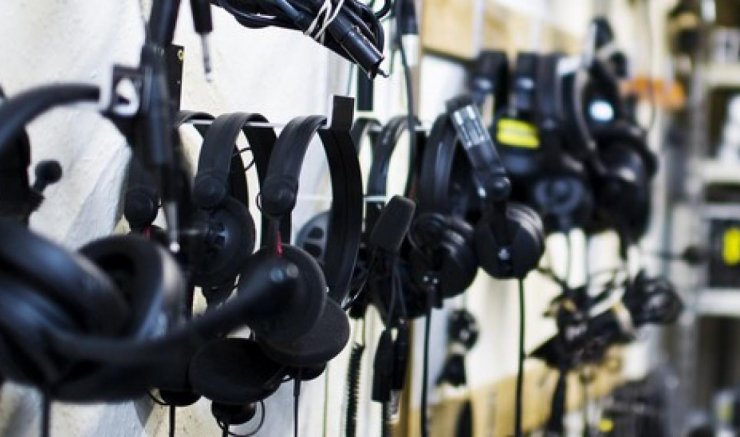Login / Quote Area
0 items in your quote basket

UK : 01622 753662
International : +44 1622 753662
Login / Quote Area
0 items in your quote basket

Call
+44 1622 753662

The final decision of which pair of headphones, headset or microphone to purchase for use for commentary work is normally down to personal preference. There are particular headsets & mics that are very commonly found in commentary booths but, with perhaps the exception of the Coles 4104 microphone, there is no single device that outperforms all others in it's class.
Initial choices when selecting commentary mics, headphones & headsets
The first basic question that must be addressed; are you working in a quiet or noisy environment? Commentary boxes are generally used in noisy sports stadiums however they are also used in studios for 'off-tube' work and at naturally quiet sports environments such as a snooker or golf tournament.
In a noisy environment the 2 most fundamental points are the acoustical isolation normally provided by the ear pads around the headphone drivers, and the rejection of background noise by the microphone. Clearly, it is very important the commentators can hear talkback & programme circuits clearly and ensuring their voices are not drowned out due to excessive background noise.
Another important decision is the extent of importance attached to aesthetics. As more and more broadcasters offer their viewers the ability to see the commentator either via televised pre-match discussion or live web cam views during the event, the look of the equipment can start to matter.
It is likely the final choice of device will address the preference of 'to hold' or 'not to hold'! Many commentators like having both hands free during their work as it generally makes access to information that they may need easier. If they are using a hand held microphone they can be restricted in movement and therefore as a general rule, commentators opt for headsets rather than a separate microphone and headphone.
Technical considerations
Headphones have an impedance rating. It is important the headphones that are used have a rating that matches the rating of the equipment they are connected to. In very
broad terms, professional headphones have higher impedances than 'domestic' versions. Most domestic headphones only have impedances of 16 or 32 ohms, whereas popular
broadcast headphones such as the Sennheiser HMD25 or 26 have an impedance of 600 ohms. The electronic circuit required to correctly drive these different impedances are not the
same and although you can connect a low impedance headset to a drive circuit designed for use with high impedances (or vice versa), the end result can be very poor.
Does the microphone need phantom power and how much? Clearly, if the preference is for an electret/ condenser microphone that requires phantom power, the commentary
box must be able to provide this. Did you know that by far the vast majority of broadcast headsets require 5 – 15volts of phantom power?
Microphone pick up pattern matters a great deal in a noisy environment. If a general purpose microphone such as the ubiquitous Shure SM58 is used, the results are likely to be very
poor as the microphone may not be designed for such an application. Check the specifications of your favoured mic and ensure it has been designed for commentary work.
© Glensound
The Design Buildings, 6 Brooks Place, Maidstone, Kent, ME14 1HE, UK.
Tel UK : 01622 753662 | Tel international : +44 1622 753662 | Email : sales@glensound.com